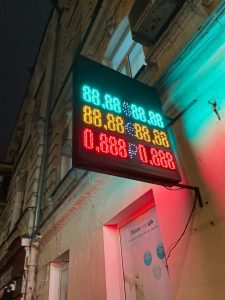Forex flag patterns are a popular technical analysis tool used by traders to identify potential trading opportunities. The pattern is formed when there is a sharp price movement, followed by a period of consolidation, and then a continuation of the previous trend. The flag pattern is considered a continuation pattern because it typically occurs during an ongoing trend.
Trading Forex flag patterns can be a profitable strategy if executed correctly. In this article, we will discuss the steps involved in trading Forex flag patterns.
Step 1: Identify the Flag Pattern
The first step in trading Forex flag patterns is to identify the pattern. The flag pattern is formed when there is a sharp price movement, followed by a period of consolidation. During this period, the price movement is contained within two parallel lines, forming a flag shape.
To identify the flag pattern, look for a sharp price movement followed by a period of consolidation. The consolidation period should be contained within two parallel lines, and the pattern should resemble a flag.
Step 2: Confirm the Trend
The next step in trading Forex flag patterns is to confirm the trend. The flag pattern is a continuation pattern, which means it typically occurs during an ongoing trend. Therefore, it is essential to confirm the trend before entering a trade.
To confirm the trend, look at the price action leading up to the flag pattern. If the price is trending higher, then the flag pattern should be a continuation of the uptrend. If the price is trending lower, then the flag pattern should be a continuation of the downtrend.
Step 3: Set Entry and Exit Points
Once you have identified the flag pattern and confirmed the trend, the next step is to set entry and exit points. The entry point is where you will enter the trade, and the exit point is where you will exit the trade.
To set the entry point, wait for the price to break out of the flag pattern. The breakout should be in the direction of the trend, and you should enter the trade at the breakout point.
To set the exit point, you can use a variety of technical analysis tools, such as support and resistance levels, moving averages, or Fibonacci retracements. The exit point should be set based on your trading strategy and risk management plan.
Step 4: Manage Risk
Managing risk is an essential part of trading Forex flag patterns. It is crucial to have a risk management plan in place to protect your capital.
To manage risk, you can use stop-loss orders. A stop-loss order is an order to close the trade if the price moves against you. You can set the stop-loss order at a level that represents the maximum amount of capital you are willing to risk on the trade.
Step 5: Monitor the Trade
Once you have entered the trade, it is essential to monitor it closely. Keep an eye on the price action and be ready to adjust your exit point if necessary.
If the price moves in your favor, you can consider moving your stop-loss order to lock in profits. This is known as a trailing stop-loss order.
Conclusion
Forex flag patterns are a popular technical analysis tool used by traders to identify potential trading opportunities. Trading Forex flag patterns can be a profitable strategy if executed correctly. The key steps involved in trading Forex flag patterns are identifying the pattern, confirming the trend, setting entry and exit points, managing risk, and monitoring the trade. With proper risk management and a solid trading strategy, Forex flag patterns can be an effective tool for traders.





